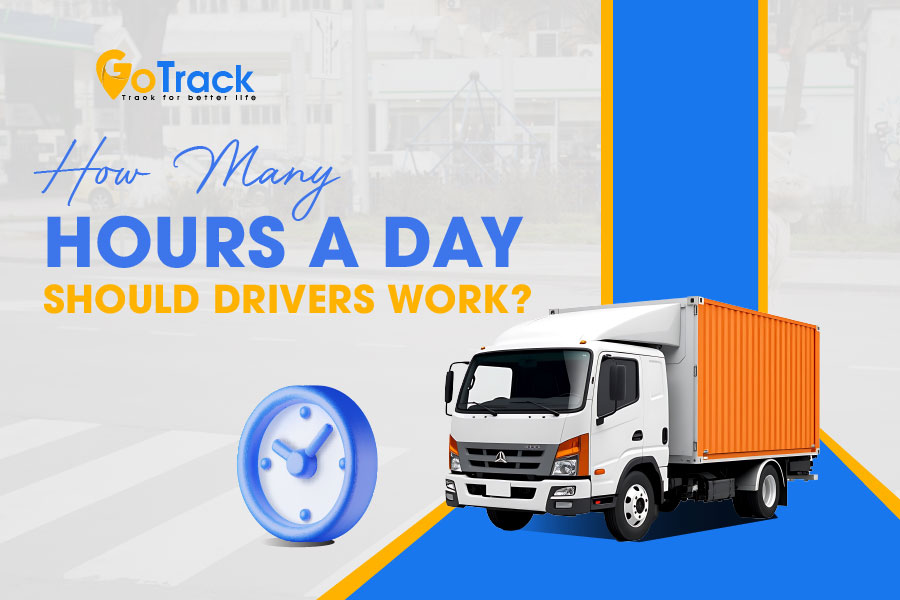Many companies overlook drivers’ working hours, allowing them to drive for as long as they want, which leads to serious consequences, including increased accident risks, reduced productivity, financial losses, and reputational damage.
Today, let’s explore the impact of failing to monitor drivers’ working hours and why businesses must take this issue seriously!
Have you known about drivers’ working hours per day?
Most countries set a legal limit of 9-11 drivers’ working hours per day, with mandatory rest breaks to prevent exhaustion. However, experts recommend 8-10 hours as the ideal daily driving time to balance productivity and safety.

Exceeding these limits can lead to drowsy driving, slower reaction times, and increased accident risks. To stay alert, drivers should take breaks every 2-4 hours, stay hydrated, and maintain a healthy routine.
Consequences when businesses can’t manage drivers’ working hours
Higher risk of traffic accidents
When companies fail to enforce strict working hour regulations, drivers often push beyond safe limits to maximize earnings. Many may drive for too long hours without proper rest, aiming to complete more trips in less time.
Driving for extended periods leads to exhaustion, decreased focus, and slower reaction times, significantly increasing the likelihood of accidents. Fatigued drivers struggle to assess road conditions properly, making them more prone to mistakes such as misjudging distances, ignoring traffic signals, or failing to react to sudden hazards. These accidents not only put the driver’s life at risk but also endanger passengers, other road users, and pedestrians.
Decreased work efficiency
Overworking may seem like a way to boost efficiency, but in reality, it has the opposite effect. Fatigued drivers experience slower decision-making, increased errors, and lower concentration levels, all of which reduce work performance.
Prolonged overwork can cause long-term health issues, forcing drivers to take extended medical leave or even retire prematurely due to severe injuries from accidents. Furthermore, drivers who violate regulations may face license suspensions or vehicle impoundments, disrupting business operations. This results in additional costs and time-consuming recruitment, training, and replacement efforts for new drivers, ultimately lowering overall efficiency and causing delays in deliveries and services.

Financial losses for businesses that overlook drivers’ working hours
Failing to regulate drivers’ working hours can lead to significant financial consequences. If a fatigued driver causes an accident, the company may be held partially responsible for covering the victim’s medical expenses and damages. Besides, in the event of an accident, transported goods may be damaged, forcing the company to compensate customers or business partners based on contractual agreements.
Vehicles subjected to excessive driving hours without proper breaks suffer accelerated wear and tear, leading to higher repair and maintenance expenses.
Reputational damage
A company’s reputation is one of its most valuable assets, but failing to manage drivers’ working hours can severely harm its public image.
Traffic violations, accidents, and damaged goods tarnish a company’s credibility and may result in negative media coverage. In today’s digital world, where social media spreads information rapidly, businesses that neglect driver safety risk facing public backlash and loss of customer trust.
Once a company gains a reputation for poor safety standards, it becomes difficult to regain customer confidence, attract investors, and secure partnerships with reliable clients.
Loss of competitive advantage
Businesses that fail to monitor drivers’ working hours lose their edge in the competitive transportation industry. Unregulated working hours lead to poor service quality, missed deadlines, and increased legal troubles, which drive customers towards competitors with better operational standards.
Competitors who implement strict driver work-hour policies, prioritize safety and ensure operational efficiency gain the trust of clients and establish a long-term market presence. To stay competitive, companies must enforce clear work-hour regulations, leverage GPS tracking technology, and ensure compliance with industry safety standards.



